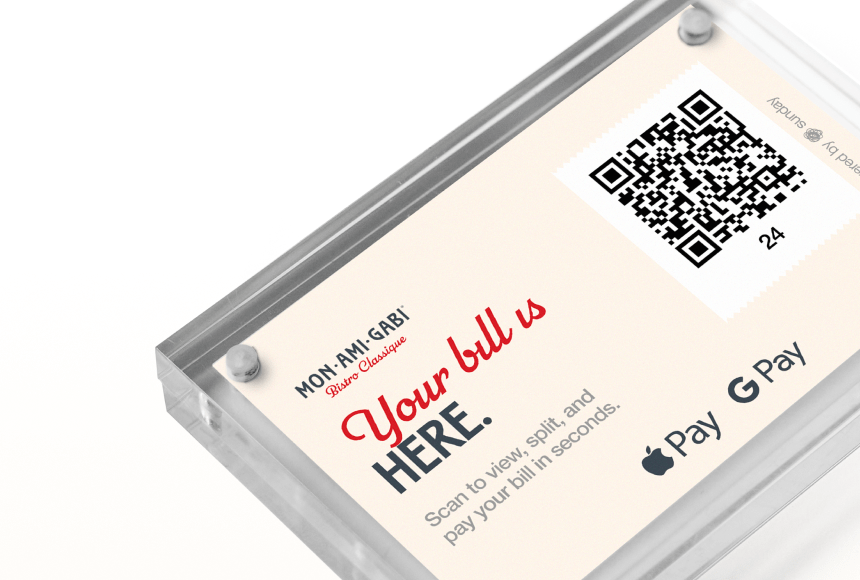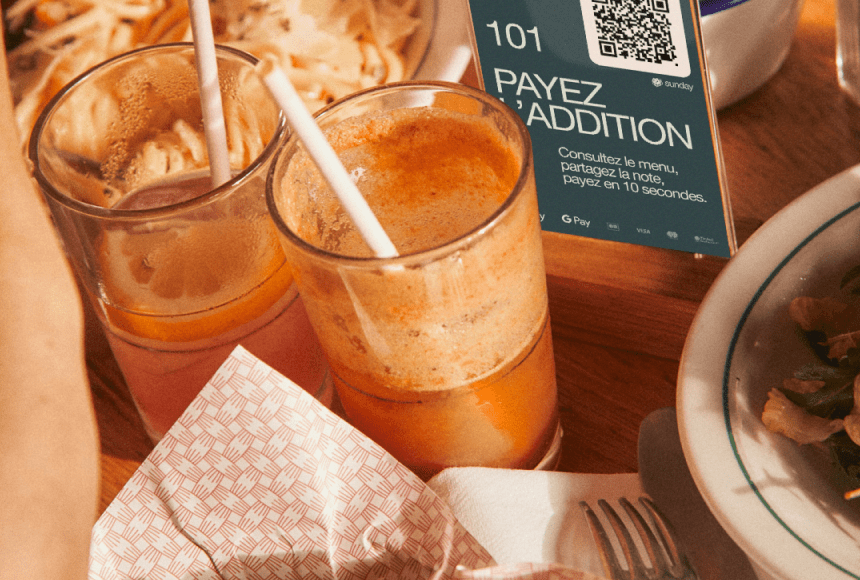
How to Use Prepayment to Protect Your Bookings and Simplify Operations
Understanding the Impact of No-Shows on Your Restaurant
No-shows are more than a mild inconvenience; they can upend your entire service. When customers reserve a table but don’t show up, you lose not just the sale but also the opportunity to seat someone else. Your kitchen is left with unused ingredients, your servers miss out on potential tips, and your entire operation risks running at a fraction of its capacity.
According to a recent industry analysis of no-show trends, many restaurants see upwards of 15% of their reserved tables abandoned on peak nights. That’s lost revenue you can’t afford—especially if you’re juggling rent, labor costs, and the price of high-quality ingredients. The solution? Prepayment.
By asking guests for partial or full payment up front, you create a greater sense of commitment. People are far less likely to ghost you when their own money is on the line. But how do you implement prepayment without scaring off potential diners or complicating your workflow? Let’s break it down step by step.
Why Prepayment Works as a No-Show Deterrent
First, let’s address the obvious: getting diners to pay a deposit—or even the entire meal price—before the actual day is a big shift. However, it’s becoming increasingly common. Many customers now expect to pay in advance for special experiences like tasting menus or popular weekend brunch reservations. By collecting a fee or deposit up front, you:
- Reduce the Risk of Loss: If diners bail last minute, you at least recoup part of the cost.
- Encourage Serious Reservations: Guests who aren’t truly committed are less likely to book in the first place.
- Plan Better: Reliable bookings let your kitchen prep accurately, cutting down on waste and last-minute chaos.
Done well, prepayment not only lowers your no-show rate but also signals that your restaurant delivers a premium, in-demand experience. After all, guests are willing to pay upfront when they trust that what’s on offer is worth it.
Step 1: Decide When and How to Require Prepayment
One key consideration is not to treat prepayment as a “one size fits all.” Instead, be strategic about when to enforce it:
High-Demand Slots
If you’re tired of no-shows on Friday and Saturday nights, focus on those prime reservations. A partial prepayment or deposit might be enough to keep your 7 p.m. slot from vanishing. Diners can still walk in or book off-peak times without paying in advance.
Special Events or Tasting Menus
Valentine’s Day, New Year’s Eve, or a special wine-pairing dinner often draw more serious customers. Asking for a deposit or full prepayment here is standard in many upscale restaurants. This ensures no seat goes wasted on a high-stakes night.
Large Groups
Group reservations can be a blessing or a curse. You fill multiple tables at once, but if a group cancels last-minute, you lose major revenue. Requiring group deposits for parties of six or more helps mitigate that risk.
The main takeaway is to tailor your approach. You don’t have to roll out prepayment across every meal, every day. Start where the risk of no-shows is highest, and measure the results.
Step 2: Communicate Your Policy Clearly
No one likes surprises—especially financial ones. To avoid confusion or backlash, you need to present your prepayment policy openly and honestly:
- Transparent Booking Pages: Whether diners use your website or a reservation platform, highlight the prepayment requirement, the amount, and how it’s charged.
- Clear Cancellation Terms: Spell out how long guests have to cancel and still receive a refund. The more straightforward, the better. For instance, if you allow a full refund up to 24 hours in advance, make that obvious.
- Payment Channels: Let diners pay with their preferred methods—credit card, mobile wallet, or an online system like sunday if you’re already using it for quick settlements.
- Confirmations via Email or Text: Send a friendly note recapping what they paid and what to expect. This extra touch reduces customer anxiety and sets a professional tone.
By being upfront, you prevent guest frustration and ensure your team isn’t bombarded with “Wait, why did you charge my card?” phone calls.
Step 3: Set Fair Yet Firm Deposit or Prepayment Amounts
The trick is to deter no-shows without alienating those who are simply exploring your menu. Aim for a deposit that feels significant enough to matter, but not so large that it scares people off. For standard dinner reservations, some restaurants choose a per-person deposit—say, \$20 each. For an elaborate tasting menu or holiday event, a higher figure might be justified.
You can also experiment with different structures. For example:
- Fully Refundable Deposits: If they show up or cancel within your stated window, they get their money back or it applies to the final bill.
- Non-Refundable Deposits: Strict, but it makes sense for very in-demand slots or exclusive experiences.
- Partial Prepayment of the Meal: For a \$50 prix-fixe lunch, you might require \$10 upfront. That’s enough “skin in the game” to minimize no-shows.
Adjust these amounts as you gather real-world data on your clientele’s behavior.
Step 4: Integrate with Your Existing Workflow
You might wonder, “Won’t prepayment create more admin work for my staff?” Not necessarily—if you choose a system that meshes with your current tools. Look for:
- POS Integration: Payments should appear automatically in your point-of-sale software, so servers and managers see each reservation’s status at a glance.
- Reservation Platform Compatibility: Many booking apps let you set up partial or full prepayment at the time of reservation. This reduces manual data entry.
- Automated Cancellation Windows: If a customer cancels in time, the system can handle the refund or credit. That’s less guesswork for you.
By keeping your staff in the loop with real-time updates, you minimize confusion and keep front-of-house operations running smoothly.
Step 5: Train Your Team to Handle Edge Cases
Prepayment is fantastic—until you face exceptions. Perhaps a guest arrives with an extra person, wants to upgrade their order, or decides they’re no longer hungry. How do you address these quirks without losing the no-show deterrent you’ve set up?
- Flexibility for Add-Ons: If someone has prepaid for an appetizer and entrée but decides on a dessert, your servers should know how to add extra charges seamlessly.
- Grace Periods and Emergencies: Life happens. A storm might cause cancellations, or a diner might have a legitimate personal emergency. Empower your managers to use discretion in these cases.
- Communication with the Kitchen: If a prepay customer is running late, let the kitchen know to pause the prep or partial prep. Otherwise, you risk serving overcooked dishes.
When staff are prepared for these scenarios, they’ll handle them confidently—keeping the experience smooth for everyone involved.
The Real Benefits Beyond Reducing No-Shows
While the main goal is fewer empty tables, prepayment can have other perks:
- Predictable Revenue: Cash flow becomes more stable, with deposits or partial payments arriving before service. That extra breathing room helps you manage expenses more effectively.
- Enhanced Guest Commitment: Diners who’ve prepaid often show up on time and are ready to enjoy their meal. That sense of investment can boost upsells or lead to a more engaged dining experience.
- Smoother Seating Management: Because your staff knows exactly how many seats are truly spoken for, they can avoid overbooking or turning people away unnecessarily.
Overall, it’s a strategy that can heighten the efficiency of your entire operation, from the second someone reserves to the moment they pay their final check.
Addressing Common Concerns
Naturally, owners and managers may have reservations about, well, reservations that require prepayment. Let’s tackle a few typical doubts:
“Will I Scare Away Potential Diners?”
A fair question. Some guests might balk at paying upfront if they’re used to more casual or flexible arrangements. But the trend in many urban or high-demand dining scenes leans toward partial or full deposits—especially for prime weekend slots. Being transparent and offering easy refunds (with reasonable notice) can balance out that fear.
“What If People Change Their Minds About Their Order?”
It happens. Diners might arrive wanting something entirely different than what they prepaid for. In these cases, staff can simply treat the deposit as a credit. If the new dish costs more, the guest pays the difference. If it’s cheaper, they can apply the remaining credit to drinks or dessert.
“Are Refunds a Headache to Manage?”
They don’t have to be. Choose a booking platform or payment system that automates refunds when cancellations happen within the allowed timeframe. Train your host or manager to process partial refunds easily if the diner requests them. Clear processes keep it simple.
Sample Policy to Inspire Your Own
While every restaurant is unique, here’s a sample framework you could adapt:
- Deposit Amount: \$20 per person for dinner reservations on Friday and Saturday nights.
- Cancellation Window: Full refund if canceled at least 24 hours before the reservation time. Non-refundable if canceled later.
- Deposit Usage: Credited toward the final bill. If the guest fails to show up, the deposit is forfeited.
- Communication: Policy stated clearly on the booking page, email confirmations, and reminder text messages.
Adjust these details—like the deposit size or the refund cutoff—to match your typical diner behavior and the level of demand for your tables.
When to Consider Other Approaches
Prepayment might not suit every situation. For example, if your place is a casual walk-in joint where reservations are rare, it could feel like overkill. Or if you run a tight-knit community cafe, your customers might find it overly formal.
In such cases, you might test other approaches:
- Text Confirmations: Automated reminders asking diners to confirm or cancel.
- Waitlist Apps: Fill empty seats quickly if someone doesn’t show within 10 minutes of their slot.
- Loyalty Incentives: Reward those who consistently keep their reservations with free appetizers or loyalty points.
Still, for many mid-tier and upscale spots that face high no-show rates, collecting a deposit remains one of the most effective guardrails.
Measuring Success and Tweaking Over Time
After rolling out a prepayment strategy, keep an eye on results. Did your no-show rate drop? By how much? Are customers complaining or praising the new system? A few metrics to monitor:
- Reservation Turnout: Compare how many actually show up out of those who book.
- Cancellation Timing: Are people canceling last-minute or more in advance, thanks to your refund window?
- Average Spend: See if the deposit or partial payment influences them to spend more or less once they’re in-house.
Use the data to tweak policies, such as adjusting deposit amounts or changing the cancellation deadline. That ongoing feedback loop ensures you find a sweet spot between protecting your bottom line and maintaining a welcoming vibe.
Moving Forward with Confidence
No-shows can wreak havoc on your carefully planned shifts. But a well-designed prepayment strategy helps tame the chaos, ensuring that reserved seats are filled by genuinely committed diners. By communicating your policy clearly, setting fair deposit amounts, and training your team for edge cases, you can cut no-shows dramatically—sometimes by 50% or more, according to anecdotal reports from restaurants that have implemented prepayment successfully.
Of course, it’s not just about the numbers. Prepayment can help you plan for the night’s ingredients more precisely, schedule staff more efficiently, and elevate the entire dining experience by removing last-minute guesswork. Customers, meanwhile, get peace of mind knowing their table is ready and waiting, making them more likely to show up on time and fully prepared to enjoy your restaurant’s ambiance and flavors.
So if you’re ready to take control of your reservations, reduce waste, and boost your restaurant’s overall profitability, consider giving prepayment a go. Start with a pilot approach—like requiring a deposit for weekend prime slots—and adapt from there. You might be pleasantly surprised at how quickly no-shows drop, how smoothly your nights run, and how happily your guests adjust to this modern, streamlined way of booking.
Find out more today
Drop us your details below and we’ll reach out within the next 24h
Get paid in advance in a couple of clicks.
Make groups prepay with a simple payment link and cut down on admin work.




